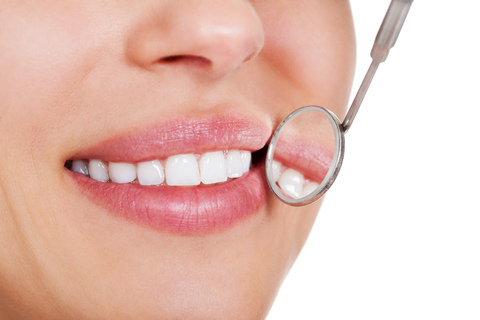Snack Attack
October 26th, 2023

Should a quick bite between meals make us feel guilty? Or worse, make our teeth suffer a greater risk of cavities? Let’s avoid both those possibilities! We have several tooth-healthy snacking strategies designed to help you keep your enamel cavity-free while preventing snacker’s remorse.
But first, a word or two about why we may find snacking unappetizing.
- Please, Don’t Feed the Bacteria!
The bacteria in plaque feed on sugars and leave acidic waste products behind. These acids attack enamel, dissolving the calcium and phosphorus minerals that keep it strong. Weakened enamel leaves teeth vulnerable to decay. That’s why Drs. Angela Paros, Amer Atassi, Eric Young, Alexander Katsnelson and our Romeoville, IL team recommend avoiding a steady diet of sugary treats.
Even if you’re not reaching for a soda, or grabbing a candy bar, many snack foods are filled with added sugars. Check the nutritional labels before you indulge to avoid sugar surprises.
- Off Balance?
Bacteria plus sugar equals more acidic conditions in the mouth. This change in the oral pH balance also reduces our natural defenses against cavity-causing acids.
A well-balanced oral environment depends on saliva to keep acids in check. Saliva washes away lingering food particles after meals, and it neutralizes acidic conditions in the mouth over the course of the day.
How does snacking interfere? Immediately after eating or drinking, acids in saliva increase. It takes about 20 minutes for saliva’s neutralizing process to begin. When we snack throughout the day, saliva doesn’t have a chance to reduce acids as long or as effectively.
- Staying Power
Sticky and chewy snacks tend to stick to the tops of molars and between the teeth. This gives bacteria more fuel and more time to attack tooth enamel. It’s not just candies that are the culprits here. Chips, bread, pizza crusts, pastries—these simple carbs stick to teeth and break down easily into sugars.
But we promised some *positive* strategic snacking ideas. Here are some ways to make sure that snacking doesn’t put you at a much greater risk for cavities.
- Be Choosy
Avoid processed treats that are high in added sugars. If you’re craving something sweet, fresh fruits provide sweetness with vitamins included.
Crispy fruits such as apples and Bosc pears, as well as vegetables like celery and carrots, provide gentle scrubbing action to help clean teeth between brushings.
Snacking on cheese helps neutralize acids, and other dairy products are high in calcium and phosphorus, helping rebuild the minerals that acids leach out of enamel.
Eat whole grain breads, pastas, and pastries. They offer more nutrients, and don’t break down into sugars as easily.
Finally, when it’s time to indulge in a sugar-rich treat, save it for a meal. There’s a better chance that other foods will balance the acids created by sugar, and you’ll be getting the most out of saliva’s neutralizing abilities. Speaking of which,
- Stay Neutral
When you’re craving something flavorful without giving bacteria more fuel for acid production, consider sugar-free gum. Sugar-free gum saves you from adding sugar to your diet, and it increases saliva production as you chew. If we give you the all-clear, chewing a piece or two of gum during the day can help curb your sugar cravings and protect your enamel.
Thirsty? Drink water instead of sodas or energy drinks with your snacks. Water washes away food particles, cuts down on acidity, and provides fluoride to strengthen and protect teeth.
- To Brush or Not to Brush?
It’s always a good idea to brush after eating. But since eating sugary or acidic foods can leave enamel vulnerable to toothbrush abrasion, many dentists recommend waiting 30 minutes after you snack before brushing. Ask Drs. Angela Paros, Amer Atassi, Eric Young, Alexander Katsnelson what’s best for your teeth.
If you can’t brush, rinse with water after eating or drinking.
If you wear braces or aligners, be sure to check with Drs. Angela Paros, Amer Atassi, Eric Young, Alexander Katsnelson about snacking, gum, best times to brush, and any other diet questions.
Talk to Drs. Angela Paros, Amer Atassi, Eric Young, Alexander Katsnelson about your snacking habits. Learning when and how to snack is as important as deciding what to snack on. Finding the perfect balance means you can enjoy a mid-day energy boost without guilt—and without risking tooth decay!
Dental X-rays and Your Child
October 26th, 2023

We’re parents, so we worry. It comes with the job description! That’s why we make sure our children use toothbrushes with soft bristles and apply just the right amount of fluoride toothpaste. That’s why we make regular appointments with their dentists for preventive care and examinations. And that’s why we want to know all about the X-rays that are used in our children’s dental exams.
First of all, it’s reassuring to know that the amount of radiation we are exposed to from a single dental X-ray is very small. A set of bitewing X-rays, for example, exposes us to an amount of radiation that is approximately the same as the amount of radiation we receive from our natural surroundings in a single day.
Even so, dentists are especially careful when children need X-rays, because their bodies are still growing and their cells are developing more rapidly than adults. And children often have different dental needs than adults, which can require different types of imaging.
In addition to the usual X-rays that are taken to discover cavities, fractures, or other problems, young patients might need X-rays:
- To confirm that their teeth and jaws are developing properly
- To make sure, as permanent teeth come in, that baby teeth aren’t interfering with the arrival and position of adult teeth, and that there’s enough space in the jaw to accommodate them
- To plan orthodontic treatment
- To check the progress and placement of wisdom teeth
So, how do dentists make sure your child’s radiation exposure during X-ray procedures is as minimal as possible?
Radiologists, the physicians who specialize in imaging procedures and diagnoses, recommend that all dentists and doctors follow the safety principal known as ALARA: “As Low As Reasonably Achievable.” This means using the lowest X-ray exposure necessary to achieve precise diagnostic results for all dental and medical patients.
Moreover, radiologists are devoted to raising awareness about the latest advances in imaging safety not only for dental and medical practitioners, but for the public, as well. With children in mind, pediatric radiologists from a number of professional associations have joined together to create the Image Gently Alliance, offering specific guidelines for the specific needs of young patients.
And because we are always concerned about the safety of our patients, dental associations around the world, including the American Academy of Pediatric Dentistry, the American Dental Association, the American Dental Hygienists’ Association, the Canadian Academy of Pediatric Dentistry, and the Canadian Dental Hygienists Association, are Image Gently Alliance members.
The guidelines recommended for X-rays and other imaging for young people have been designed to make sure all children have the safest experience possible whenever they visit the dentist or the doctor. As dental professionals, Drs. Angela Paros, Amer Atassi, Eric Young, Alexander Katsnelson and our team ensure that imaging is safe and effective in a number of ways:
- We take X-rays only when they are necessary.
- We provide protective gear, such as apron shields and thyroid collars, whenever needed.
- We make use of modern X-ray equipment, for both traditional X-rays and digital X-rays, which exposes patients to a lower amount of radiation than ever before.
- We set exposure times based on each child’s size and age, using the fastest film or digital image receptors.
We know your child’s health and safety are always on your mind, so you’re proactive about dental care. And your child’s health and safety are always on our minds, too, so we’re proactive when it comes to all of our dental procedures available at our Romeoville, IL office.
Please free to talk with Drs. Angela Paros, Amer Atassi, Eric Young, Alexander Katsnelson about X-rays and any other imaging we recommend for your child. We want to put your mind at ease, knowing that X-rays will be taken only when necessary, will be geared to your child’s age and weight, and will be used with protective equipment in place. Because ensuring your child’s dental health and safety? That comes with our job description!
How do I know if I need a root canal?
October 18th, 2023

Tooth decay affects everyone, with studies reporting that 92% of adults have had a cavity at one point in their lifetime. In more serious instances of tooth decay, however, the nerve of the tooth may become infected. This type of infection requires a root canal, in which the affected nerve is removed, and the interior of the tooth is cleaned and filled.
Tooth Anatomy
Although each tooth is covered by a hard outer shell, the interior of a tooth consists of dental pulp. This pulp is soft, containing blood vessels that bring nutrients to the tooth. Each tooth also has an associated nerve, which resides within a root canal passing from the tooth’s root into the dental pulp. This nerve provides information about temperature, allowing teeth to sense heat or cold.
Symptoms of Nerve Infection
Damage to the dental pulp or nerve tissue leads to a rapid multiplication of bacteria within the interior of the tooth. The result may be an abscess, a small pocket near the root of the tooth that becomes full of pus. This infected area commonly causes the following symptoms:
- Intense pain or sensitivity when pressure is applied to the tooth
- Sensitivity to hot or cold temperatures, even after the heat or cold has been removed
- Darkening or discoloration of the affected tooth
- A small, persistent pimple that forms on the gums
- Swollen or tender gums
- Swelling in other areas of the face, neck, or head
Nerve infection may occur due to deep decay, although repeated dental procedures, facial trauma, chipping or cracking of a tooth, or large fillings may also contribute to an abscessed tooth.
What to Do if You Think You Need a Root Canal
Only a visit to Drs. Angela Paros, Amer Atassi, Eric Young, Alexander Katsnelson can confirm whether a tooth’s nerve has become infected. We will perform an oral examination and X-rays to confirm whether the tooth is abscessed. If a root canal procedure is needed, a small hole will be placed in the tooth. The pulp and nerve tissue are removed from the tooth, which is thoroughly cleaned and filled. Then, the hole is sealed with a special compound to prevent bacteria from entering the tooth’s interior. The entire procedure is performed under local anesthesia to numb pain.
If you think you may have tooth or nerve decay, call our Romeoville, IL office today to schedule a diagnostic appointment.
Which whitening is right for you?
October 18th, 2023

Many of our patients at High Point Dental Group have been asking us about brightening their teeth lately, and today we thought we would discuss the options available to you to put the sparkle back in your smile!
Over-the-counter products – You’ve probably seen over-the-counter whiteners such as whitening strips on store shelves. While whitening strips may work for some, they do have certain restrictions. For example, they are not nearly as effective when crowns or fillings are involved. Teeth that are stained gray instead of brown or yellow typically don’t respond as well to these types of whiteners. Whitening strips typically save you money but take longer to work and also require discipline on your part to keep them in place for the right amount of time each day.
Whitening at our office – This type of whitening can be done right at High Point Dental Group. A whitening agent is applied directly to teeth and a special light helps accelerate the whitening process. This may be accomplished in one session or take several appointments. You should expect to spend anywhere from 30 to 60 minutes at each session. If you have a mix of natural teeth and fillings or crowns, Drs. Angela Paros, Amer Atassi, Eric Young, Alexander Katsnelson may recommend bonding or veneers on your natural teeth instead of regular bleaching. Teeth whitening at our office can be used to correct many tooth discolorations which may have been caused by staining, aging, or chemical damage to teeth. Using the latest in whitening technology, we can offer a safe method for creating the beautiful smile you've always wanted.
At-home whitening – If you choose this option, Drs. Angela Paros, Amer Atassi, Eric Young, Alexander Katsnelson will take a mold of your teeth and create a custom-fit whitening tray. Gel whitening solution is poured in the mouthguard-like tray, and the tray is worn for a pre-determined amount of time, generally from a couple of hours a day to every day during the night, until you’re back in our office for an evaluation.
Give us a call at our convenient Romeoville, IL office to schedule an appointment! Whiter teeth are one just one visit away at High Point Dental Group!






